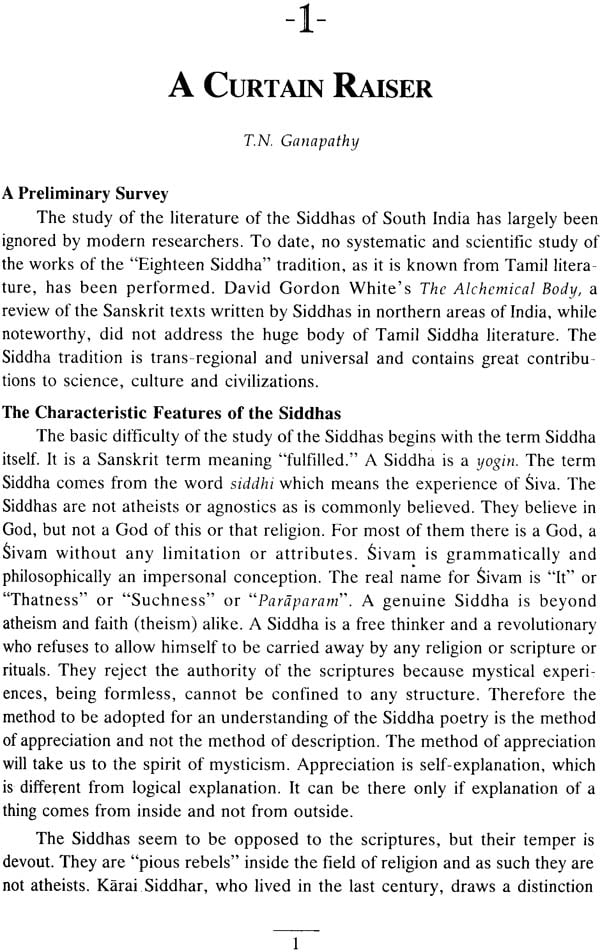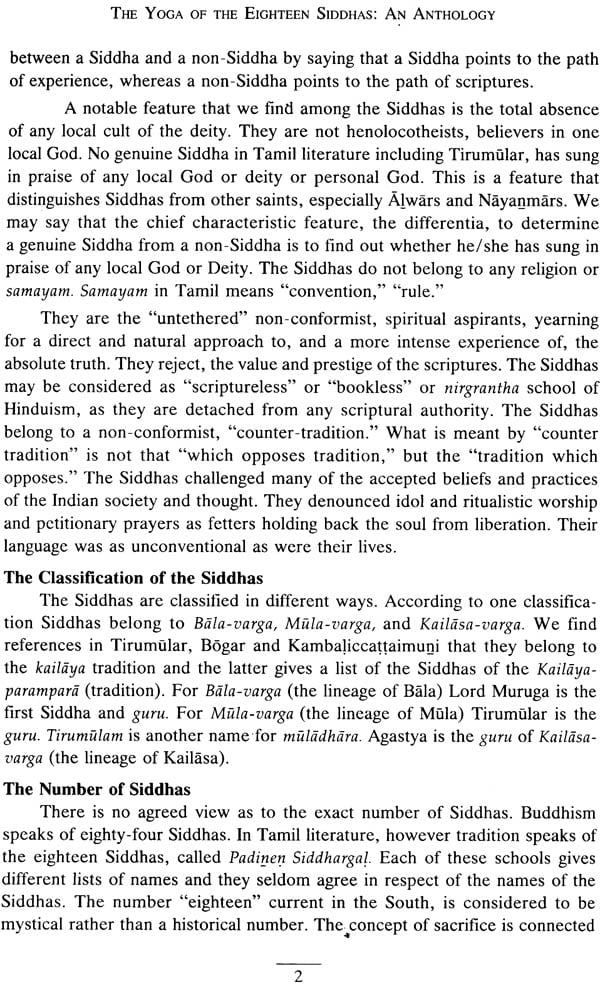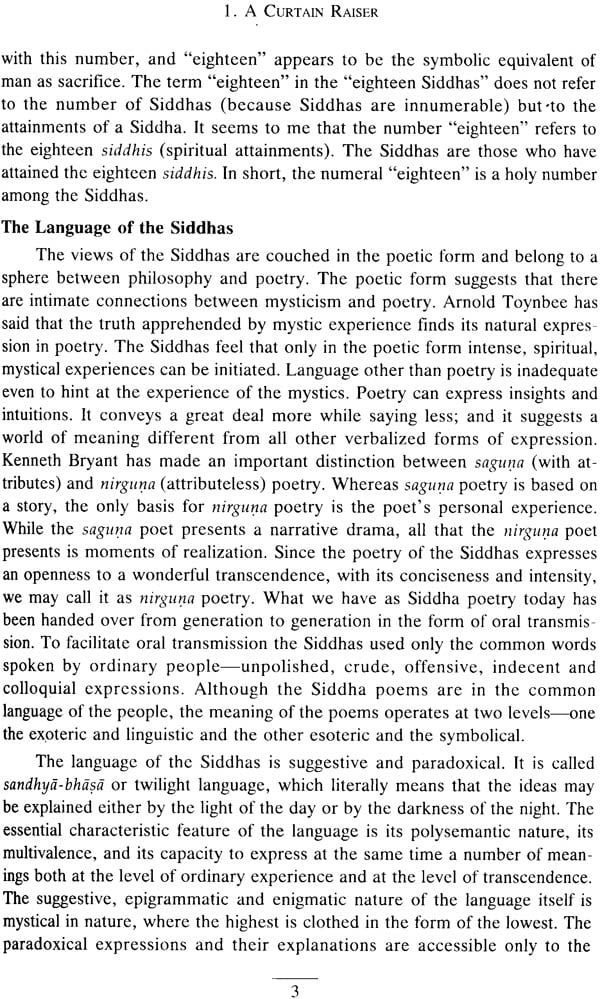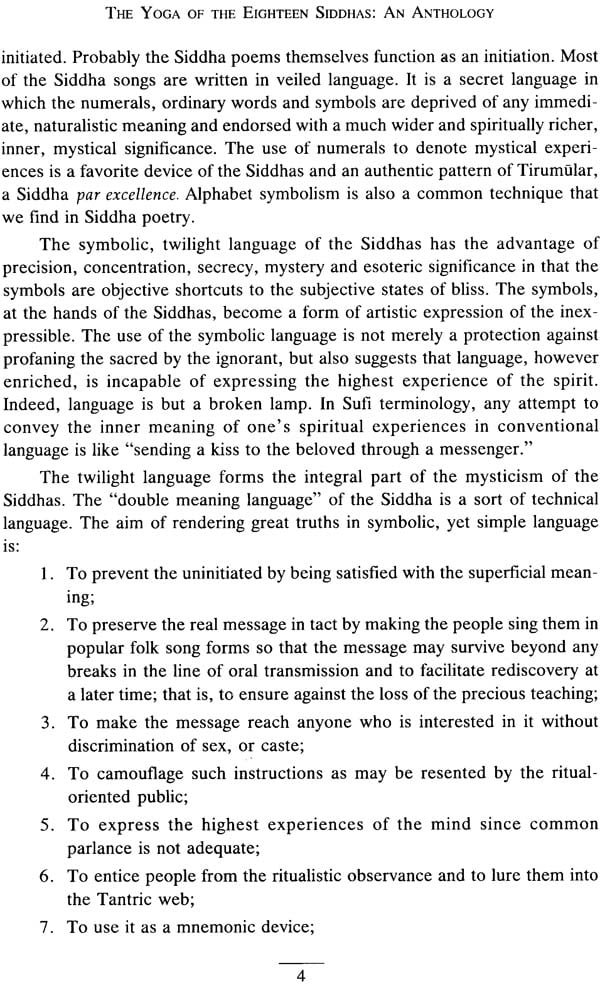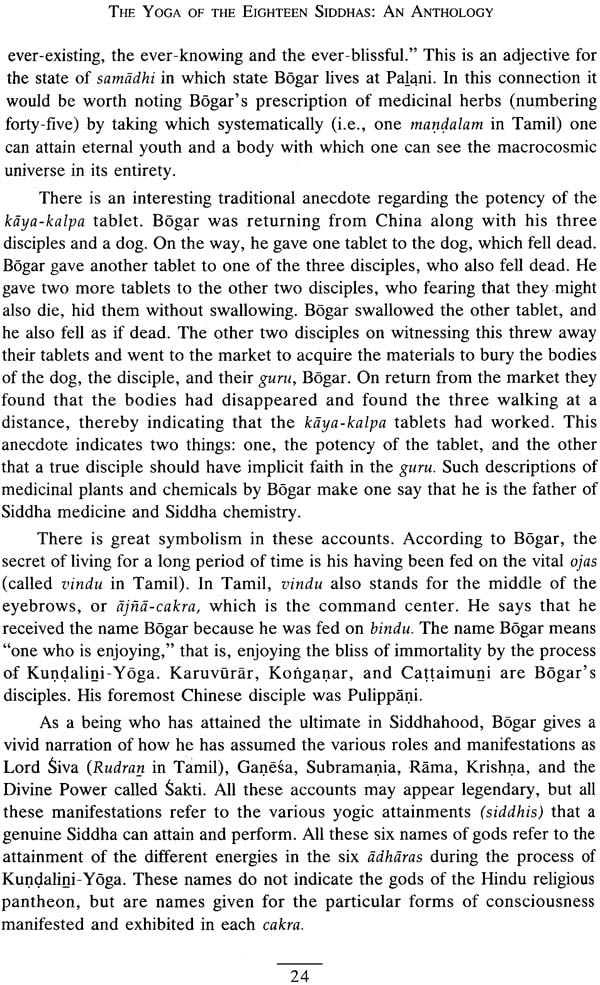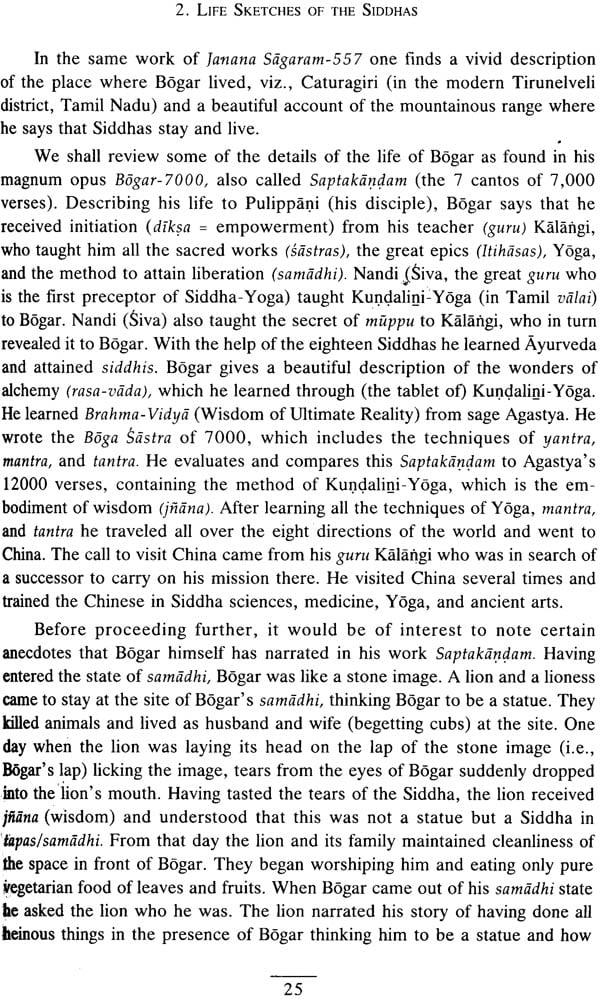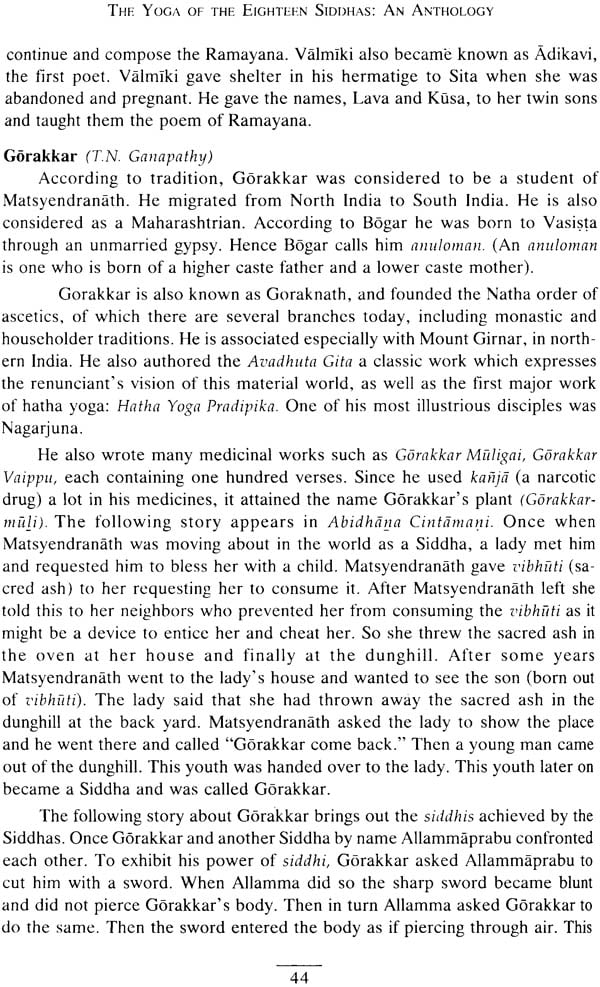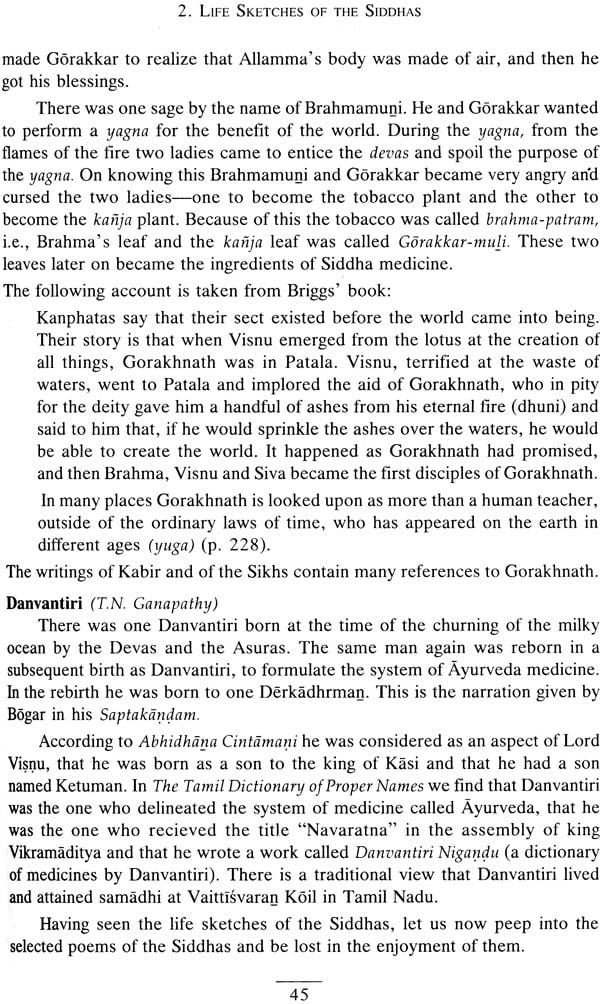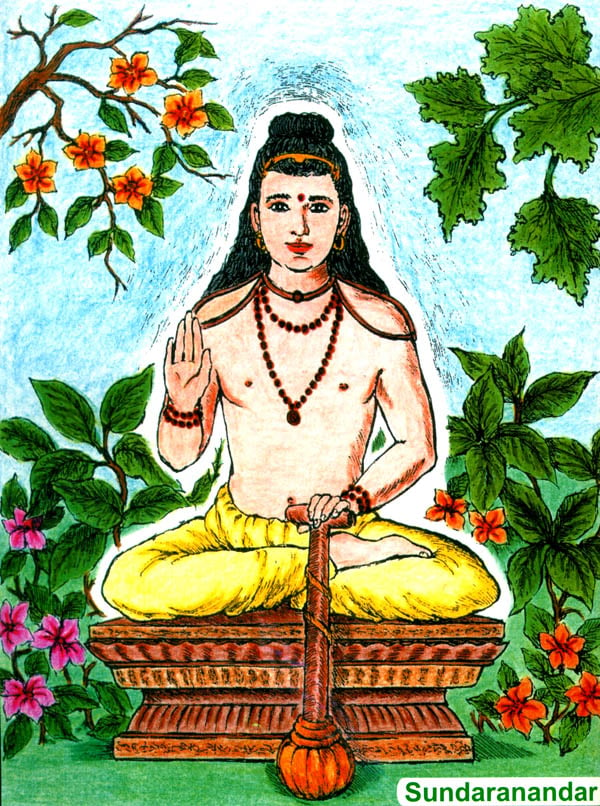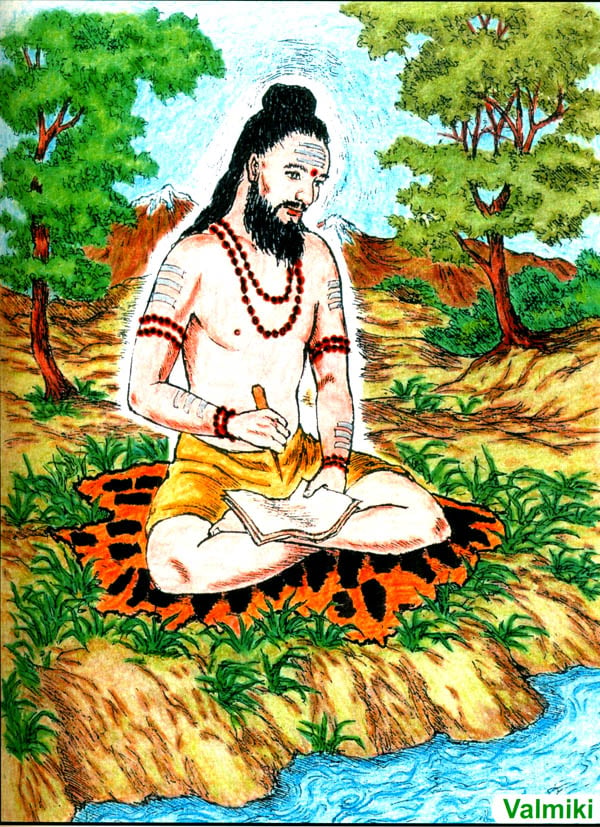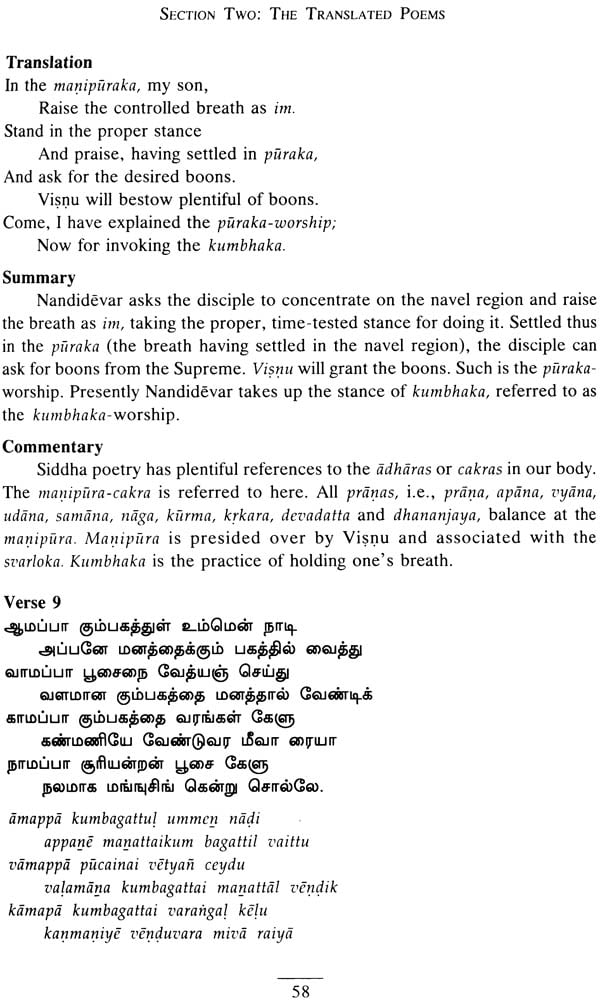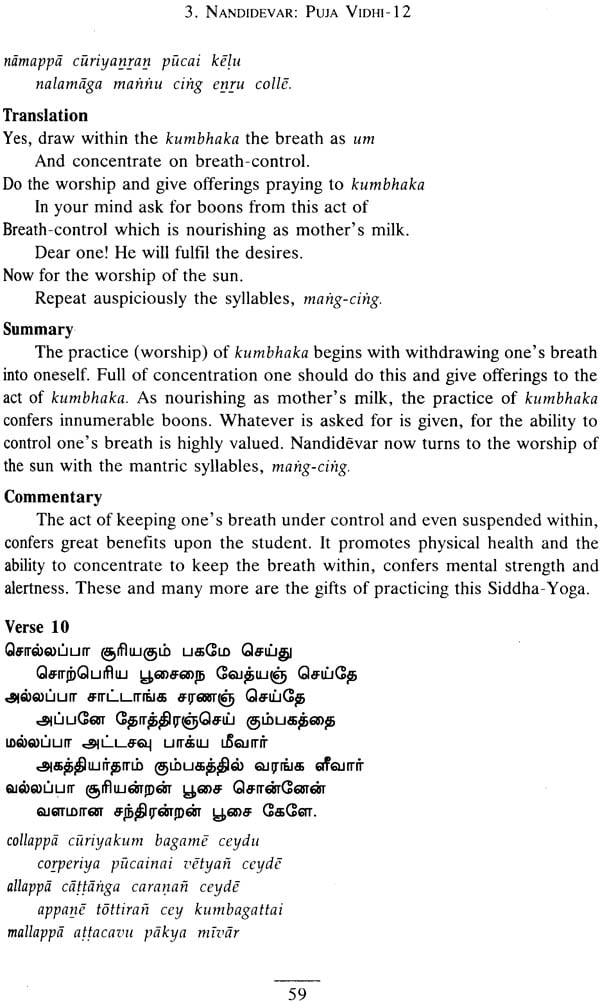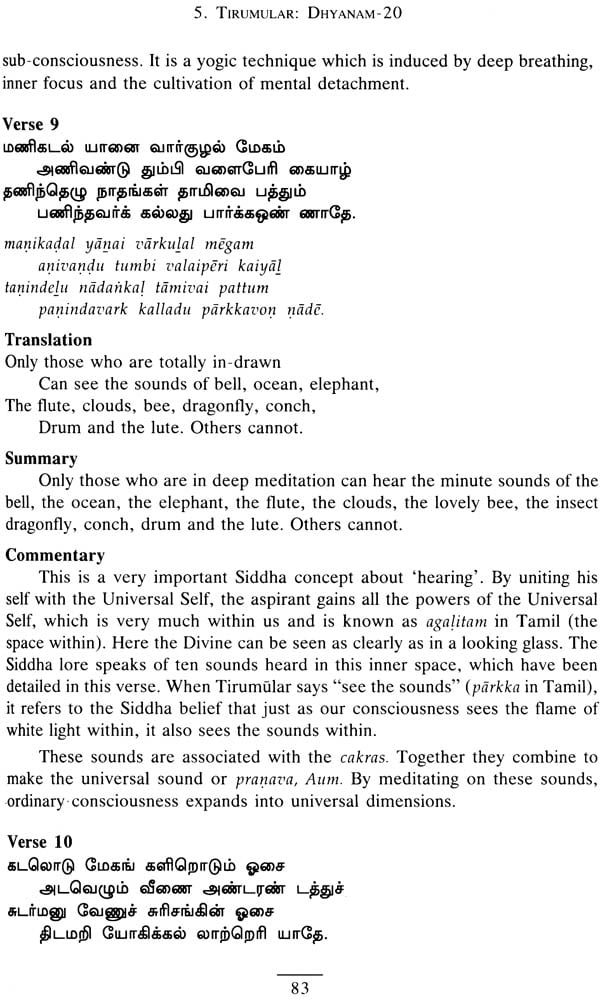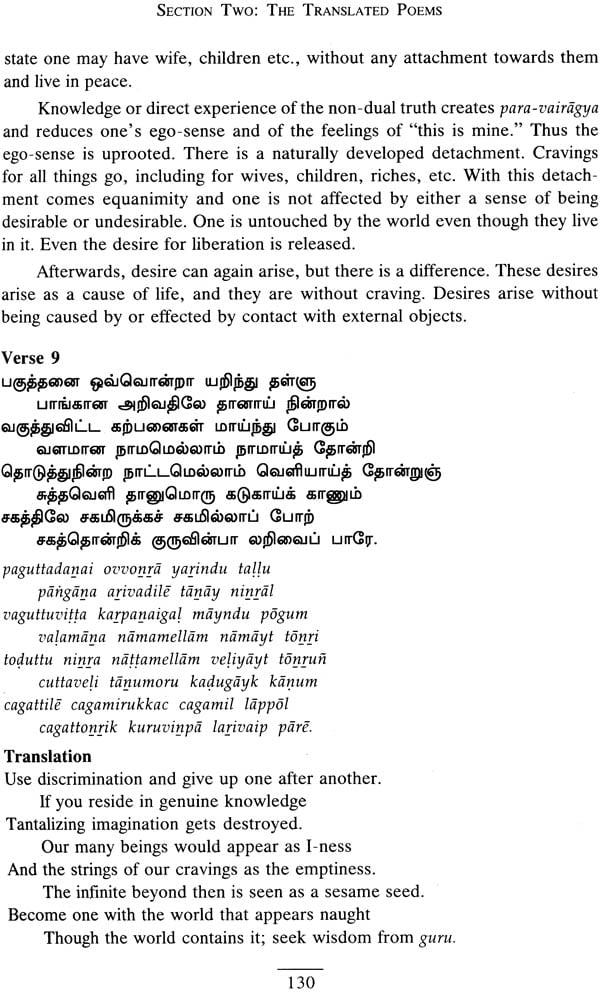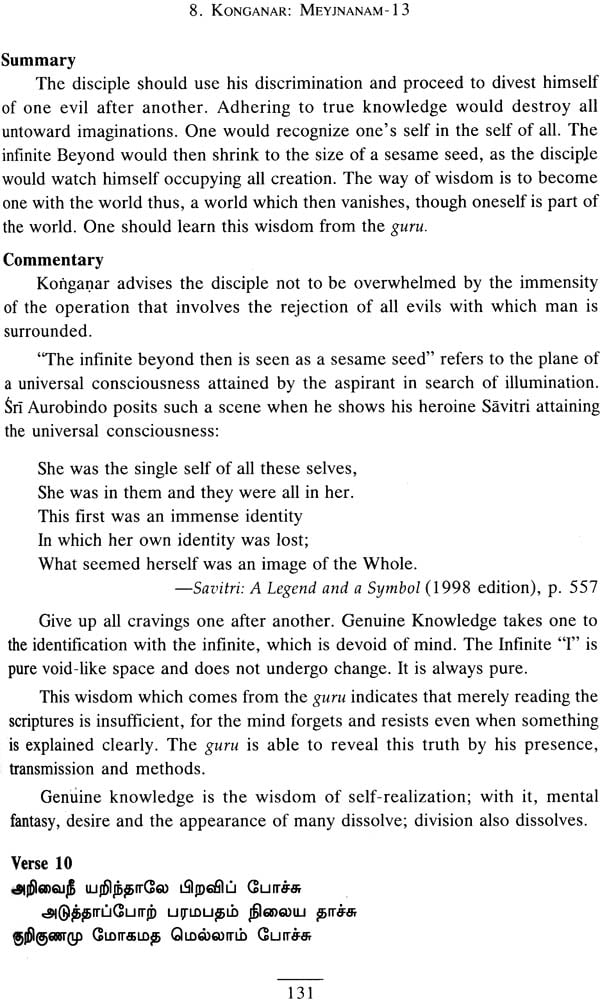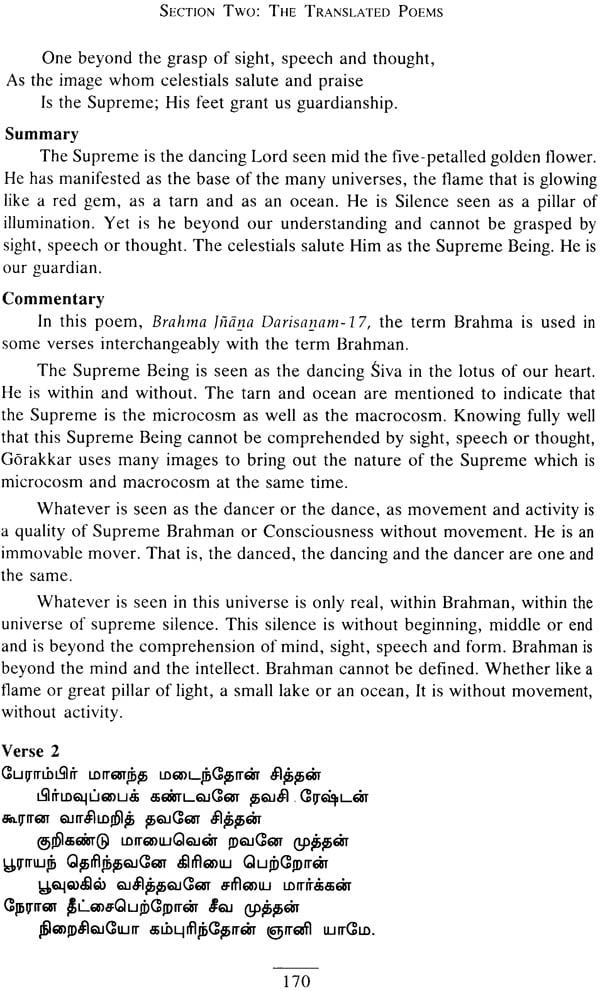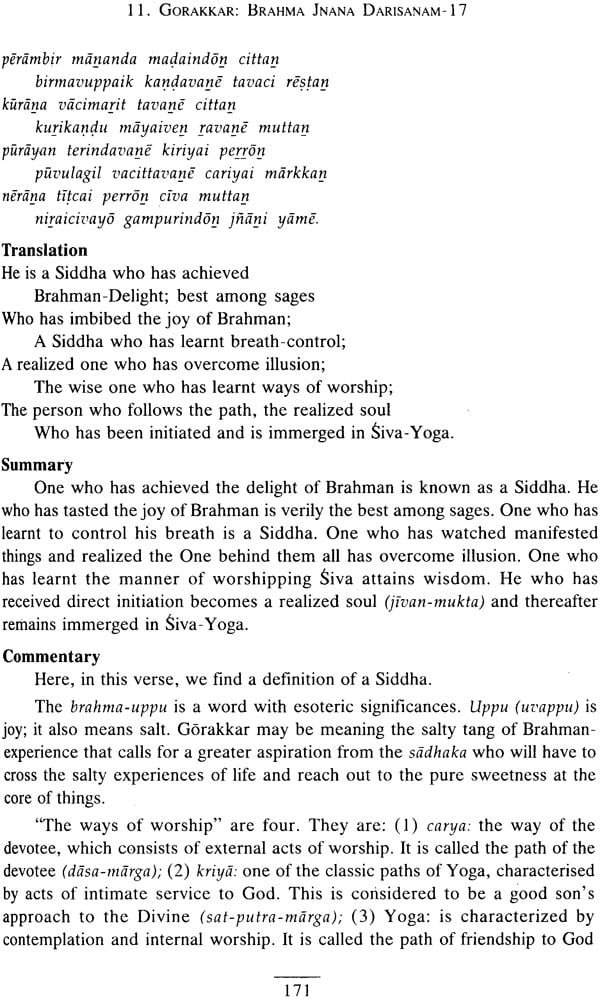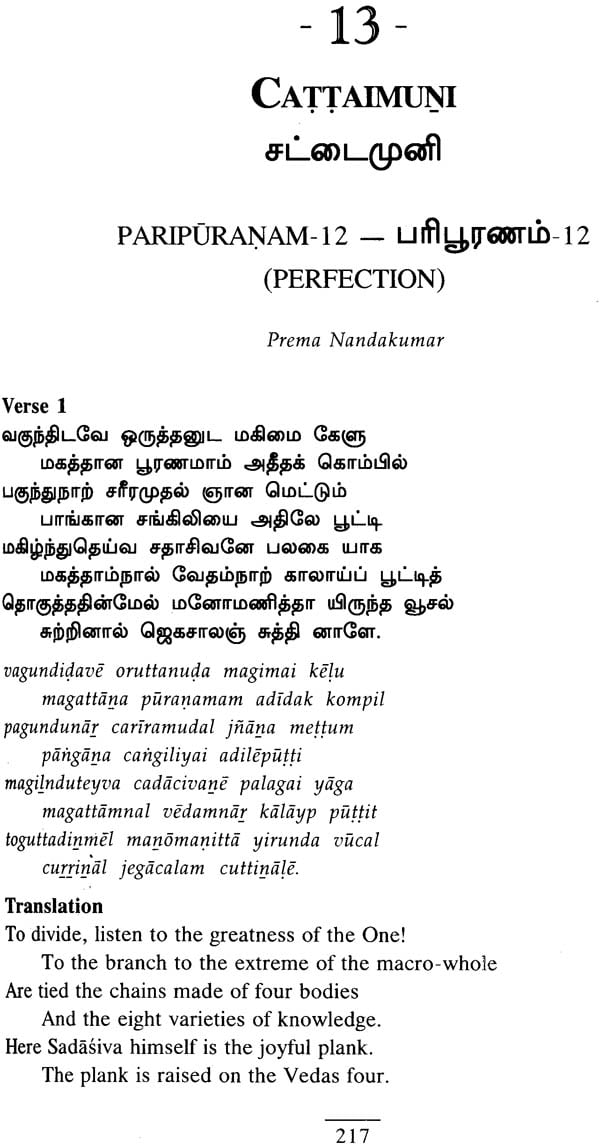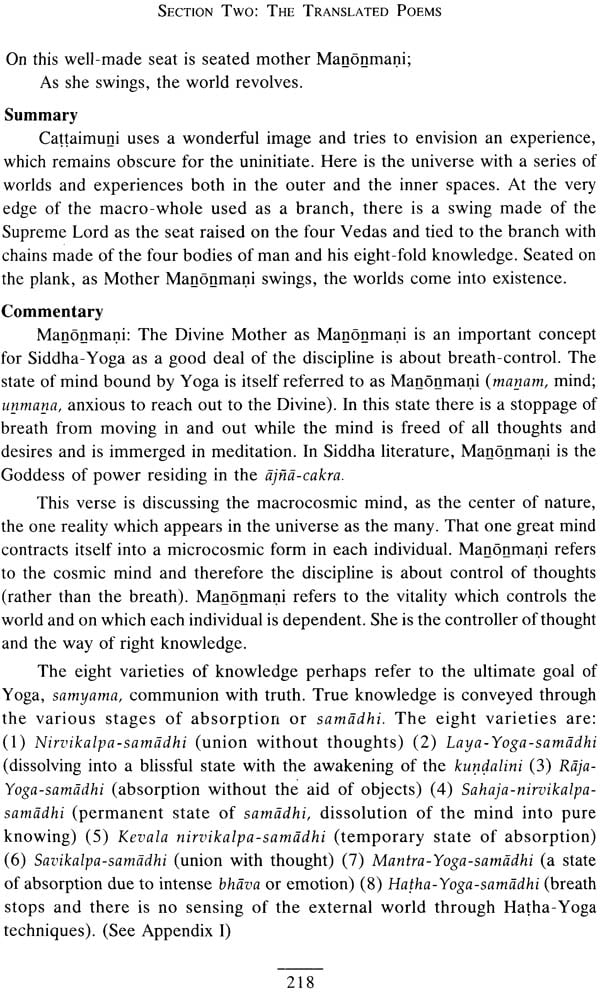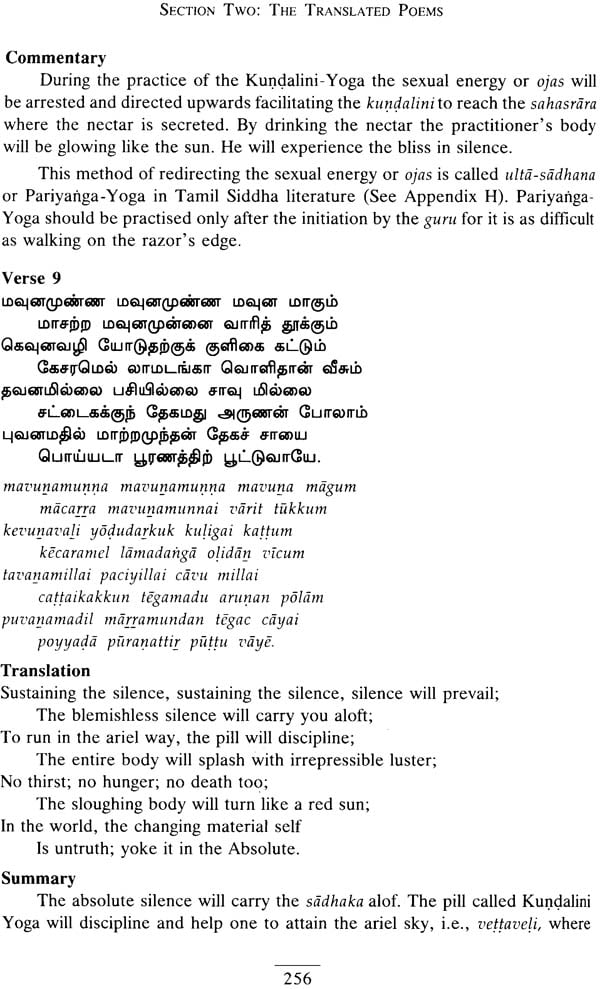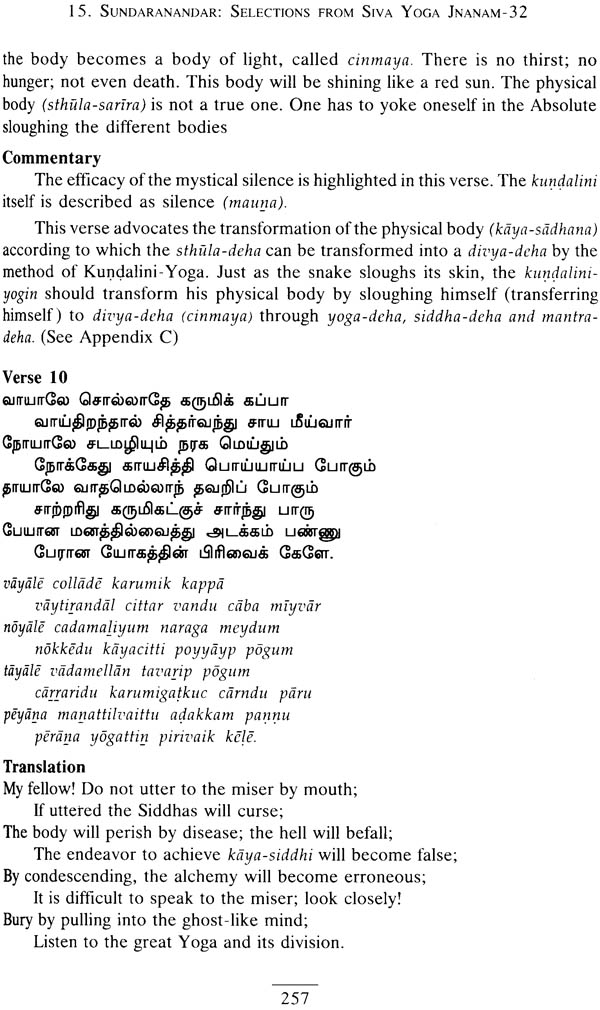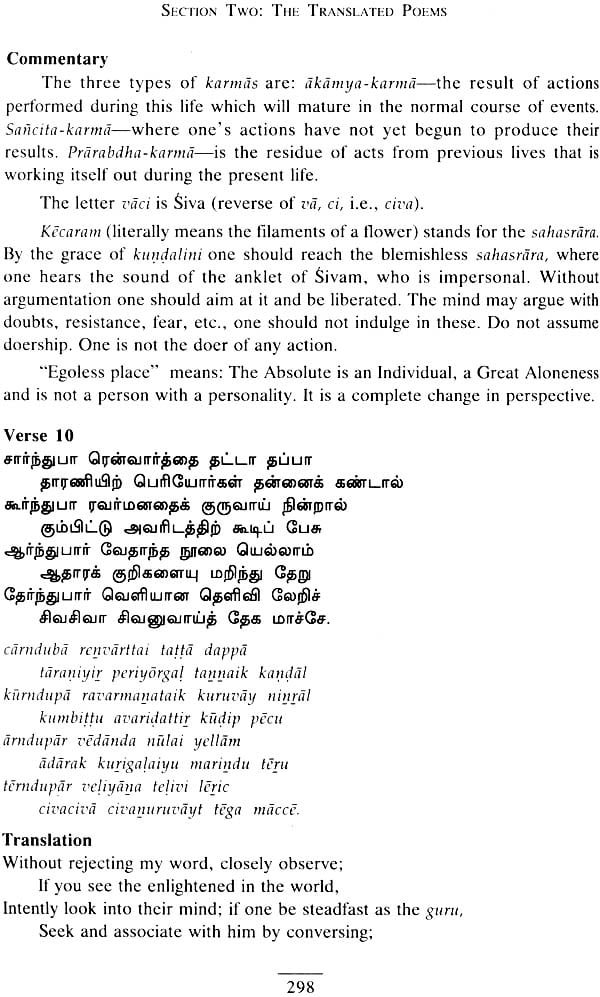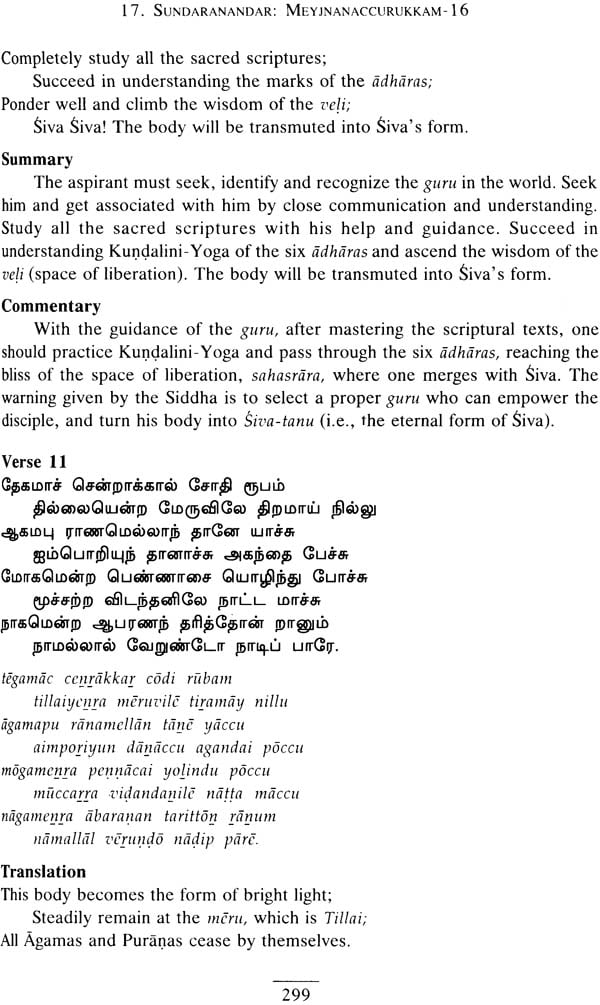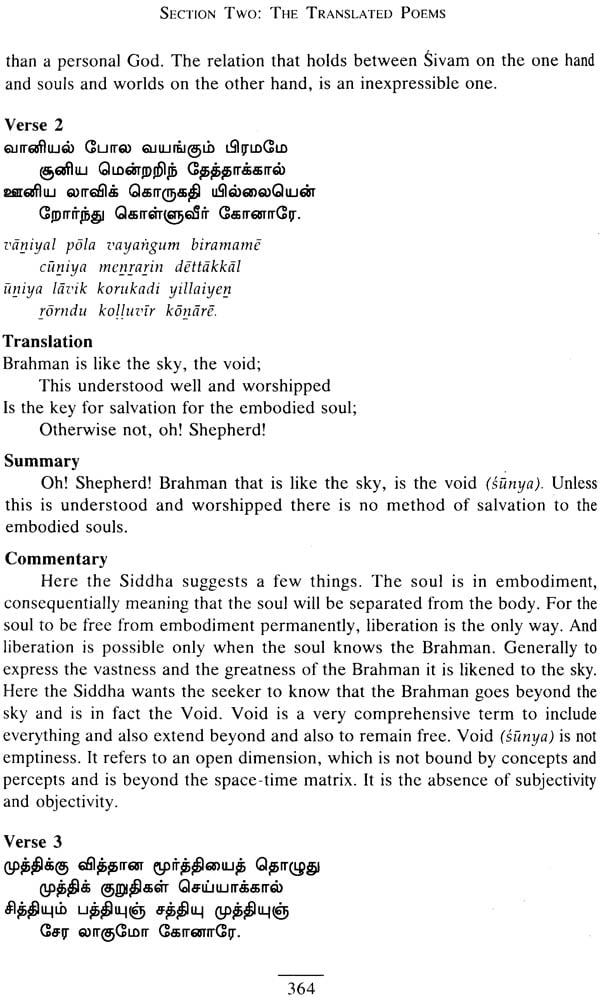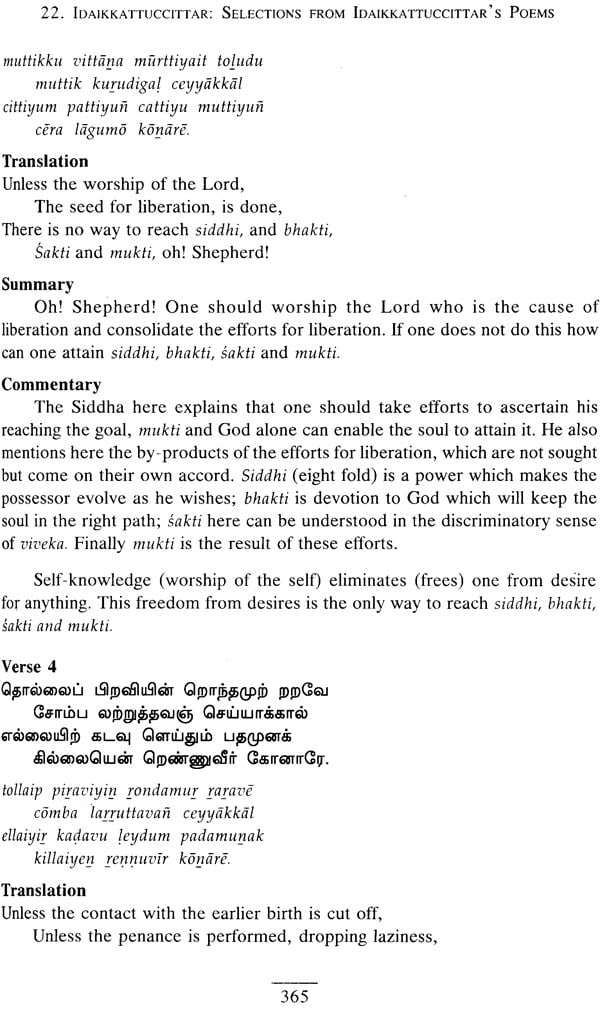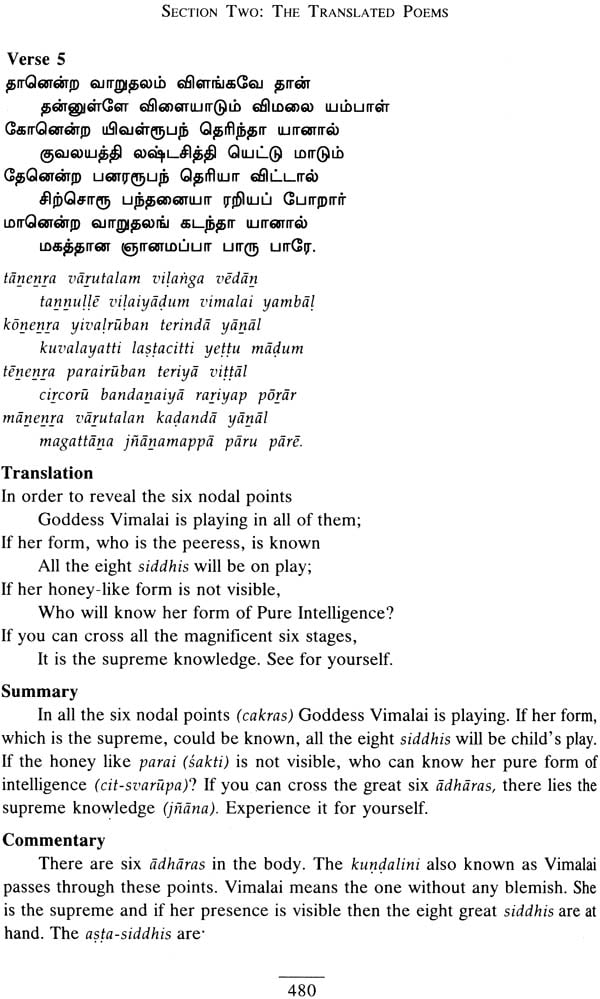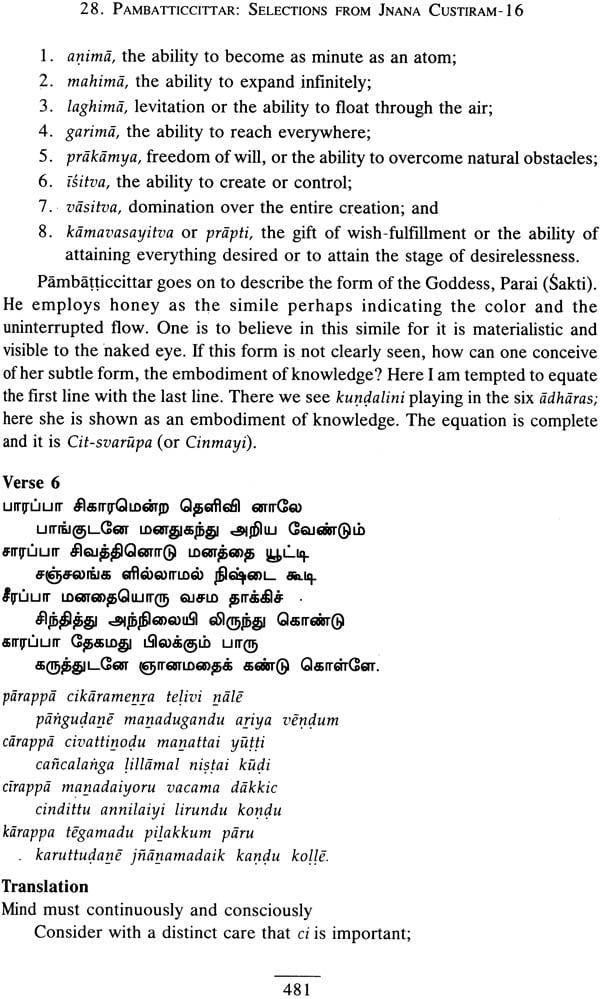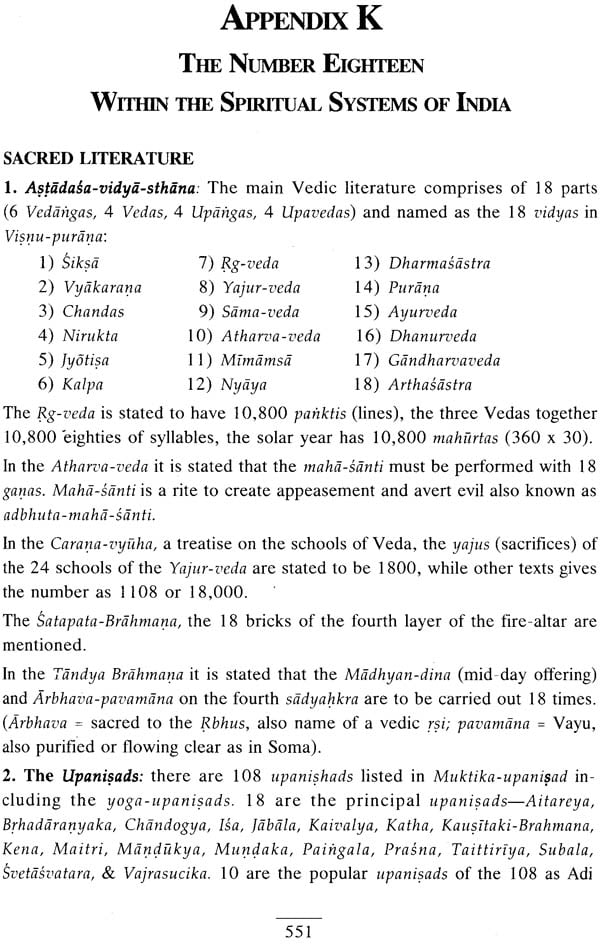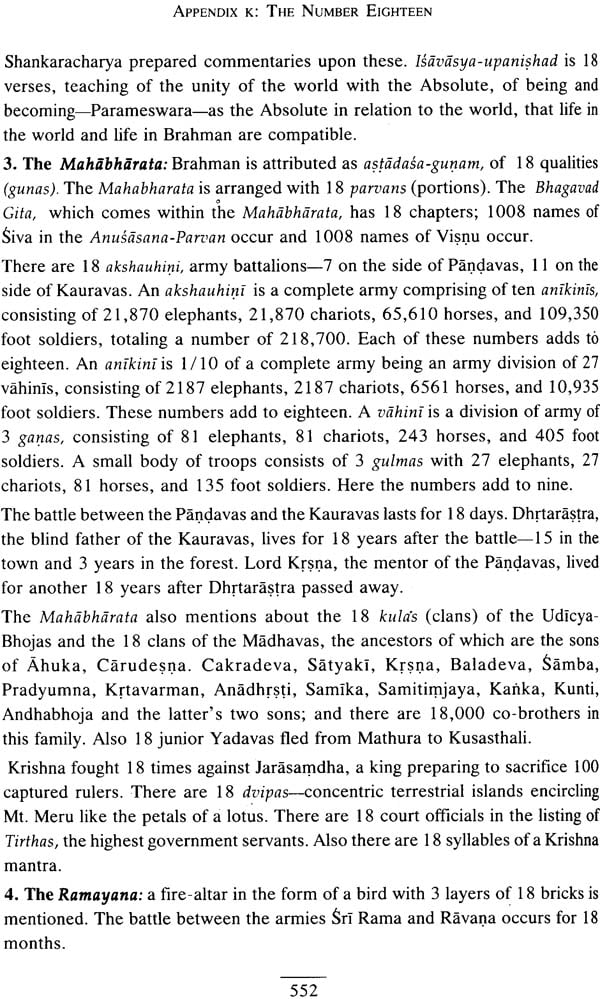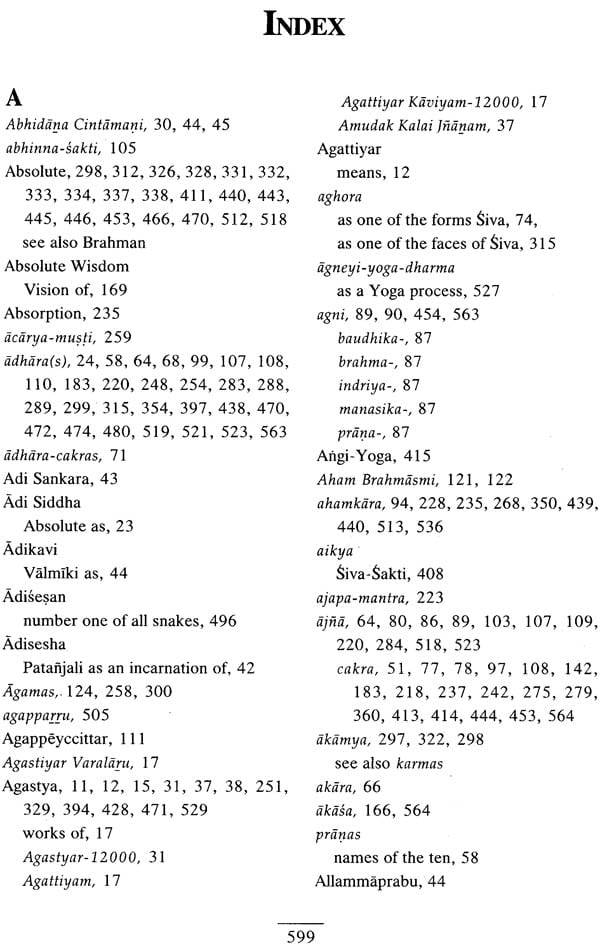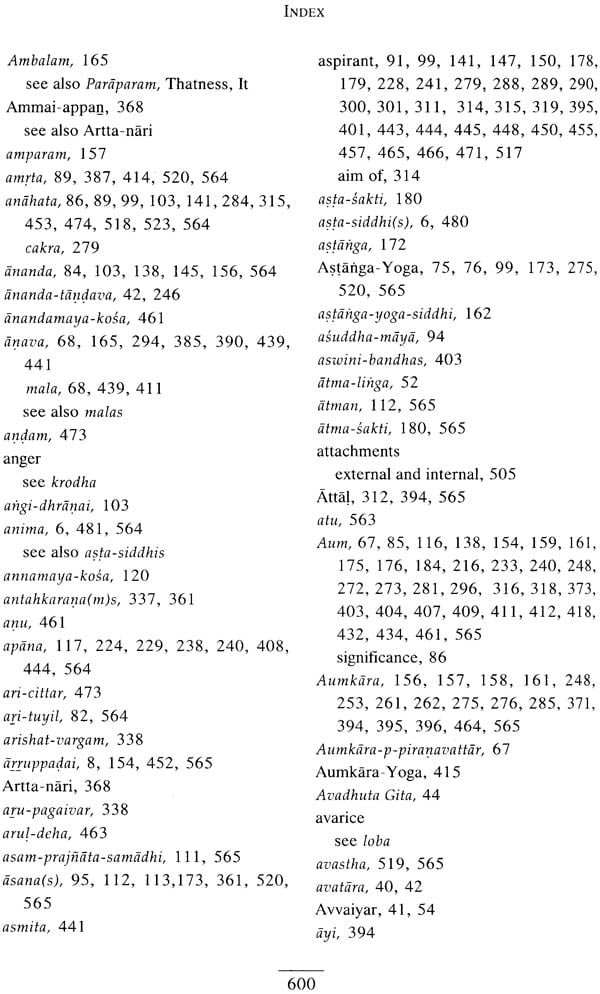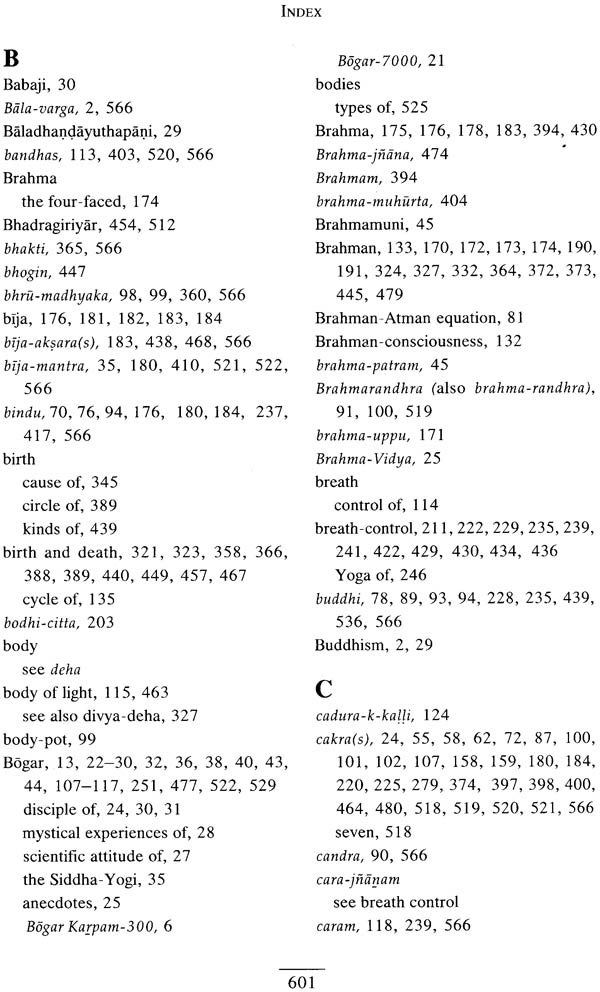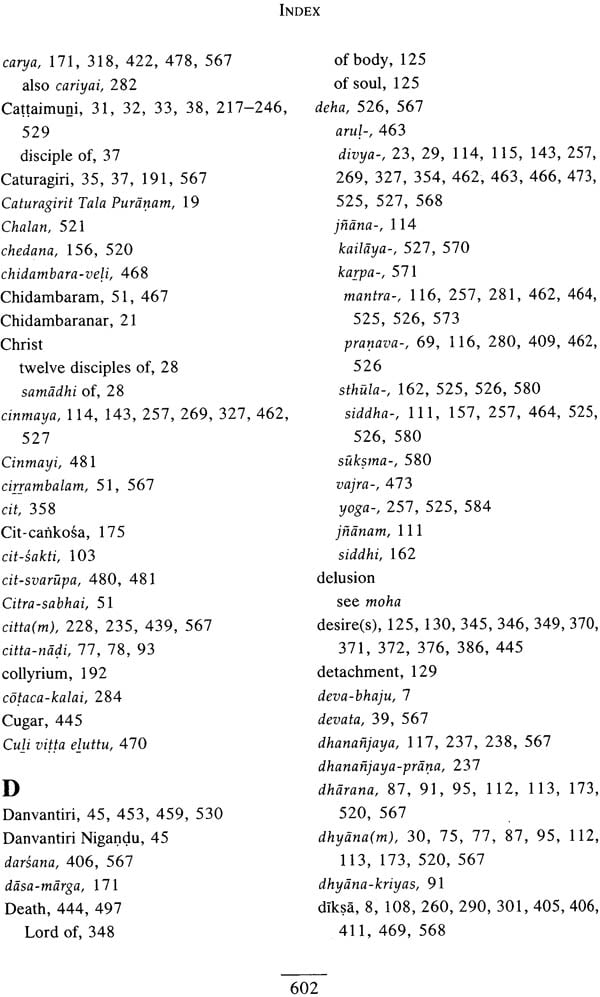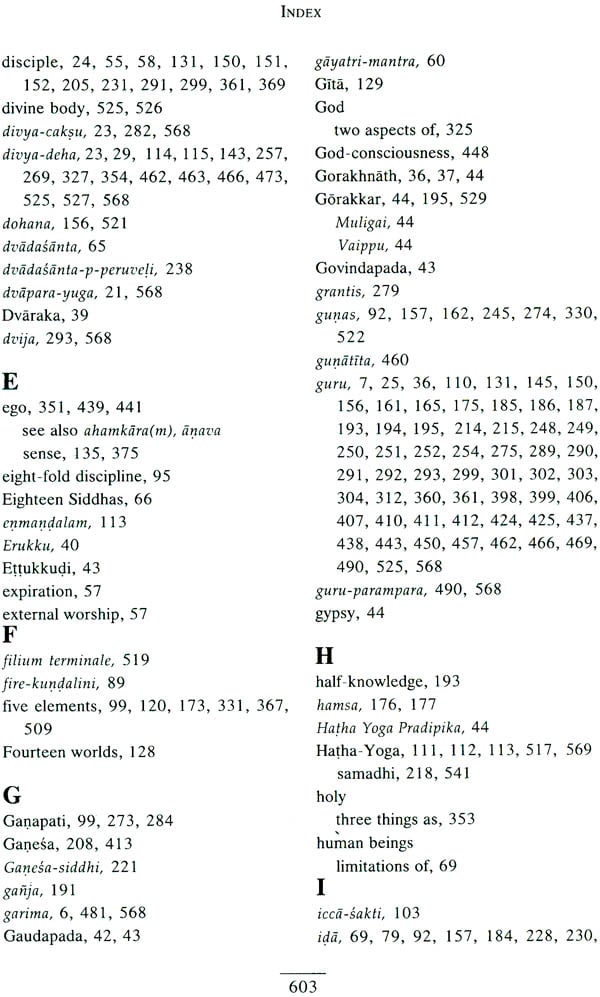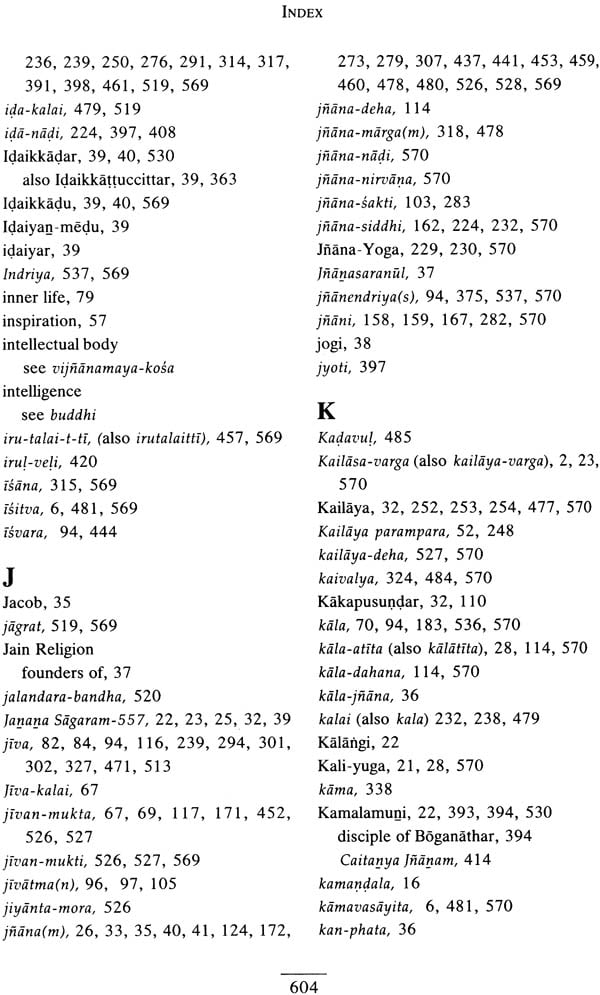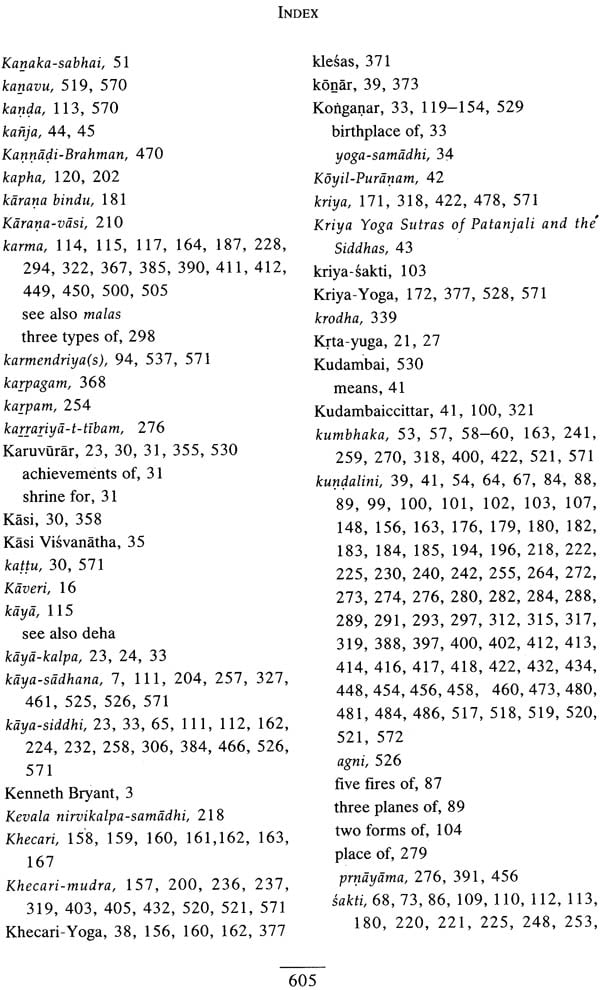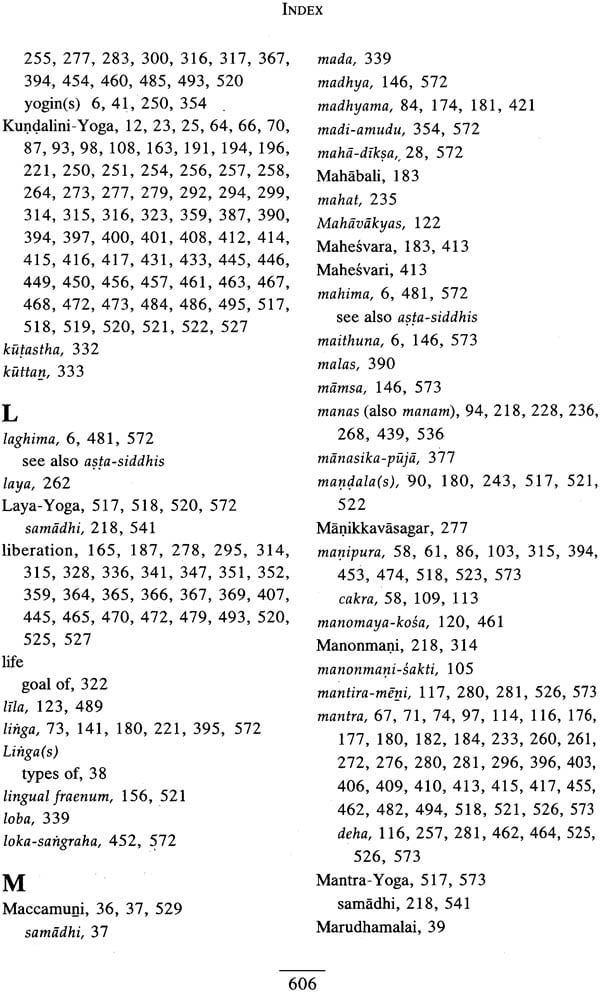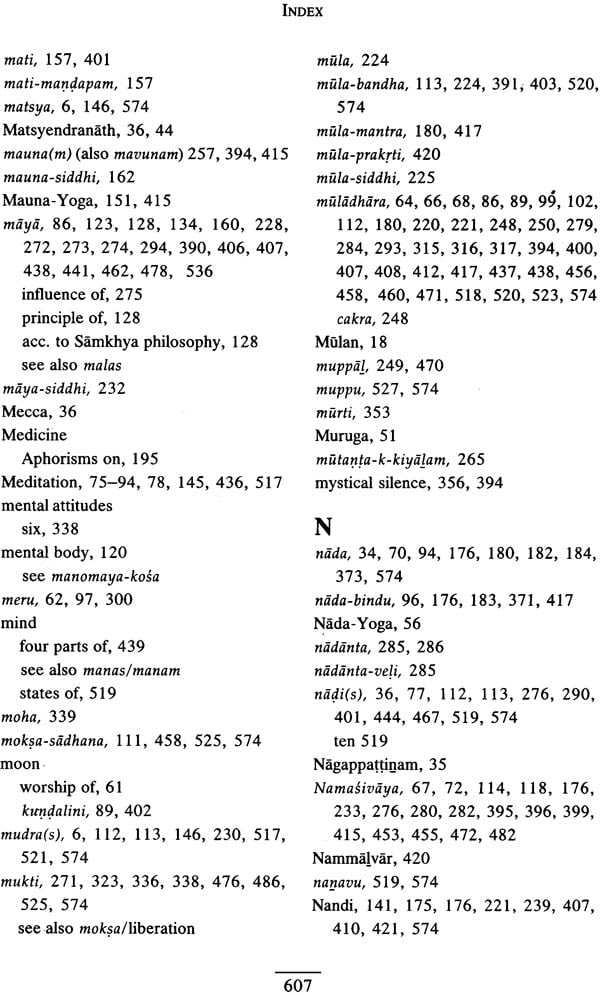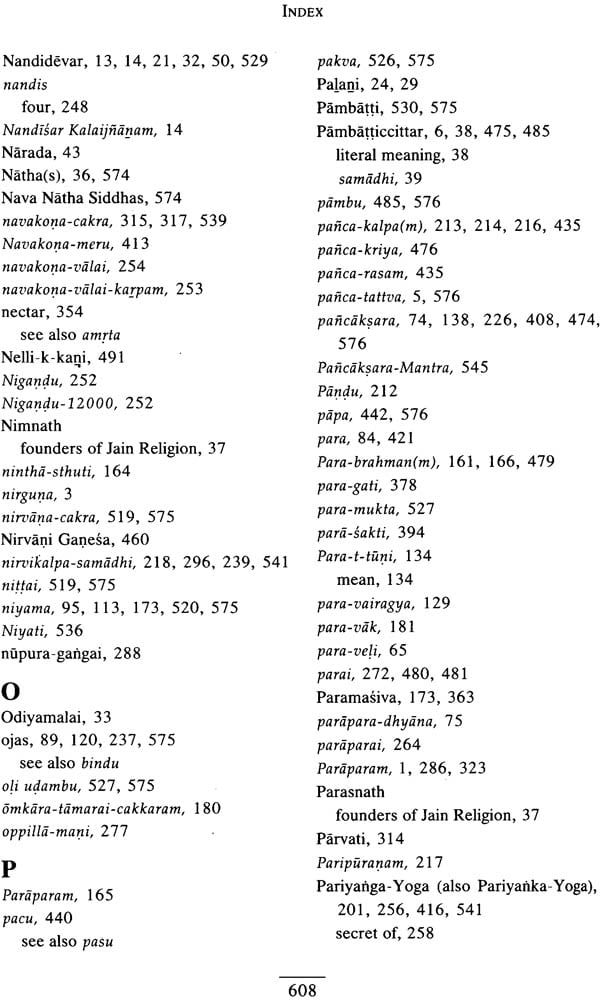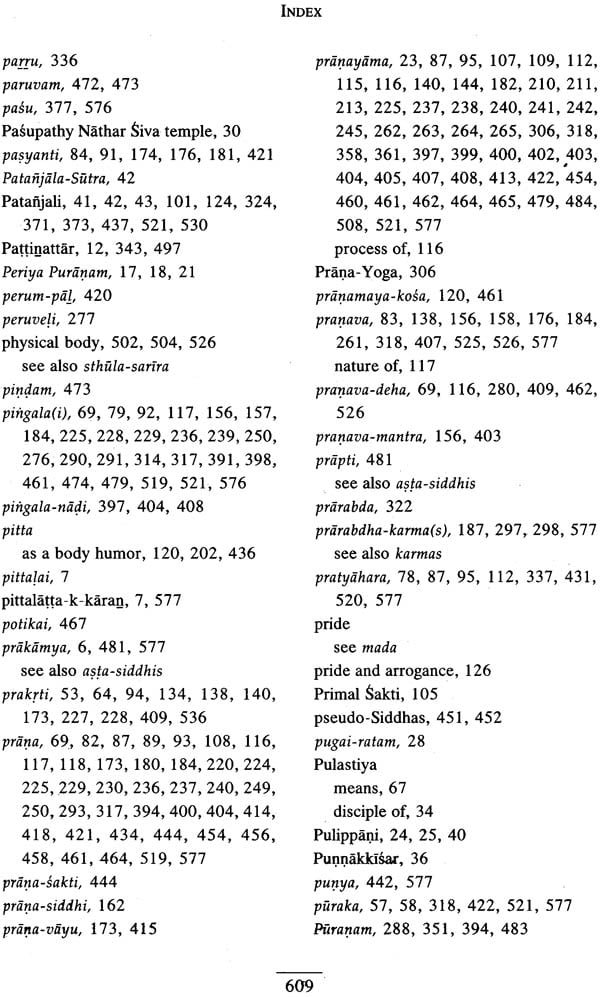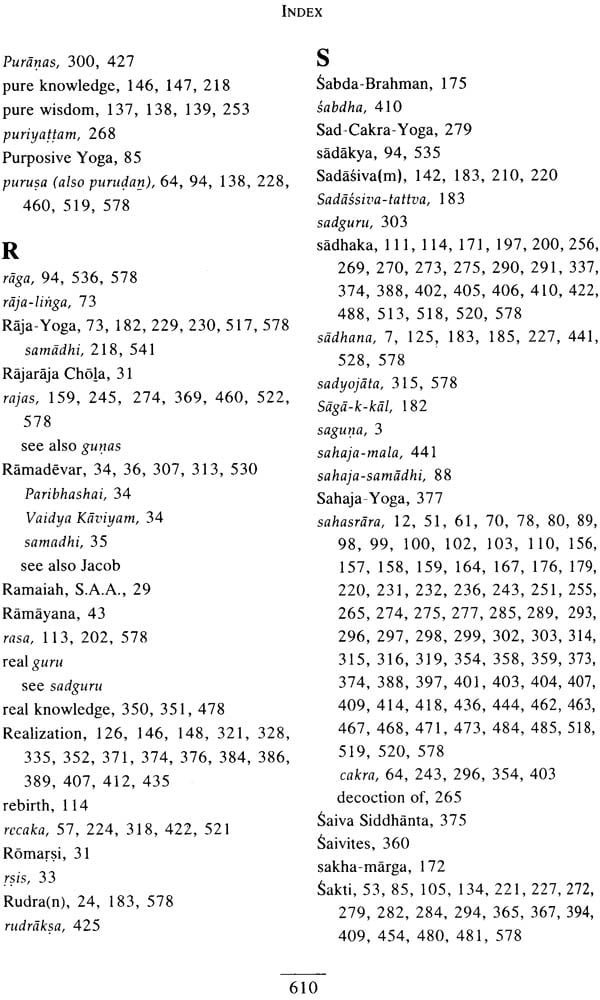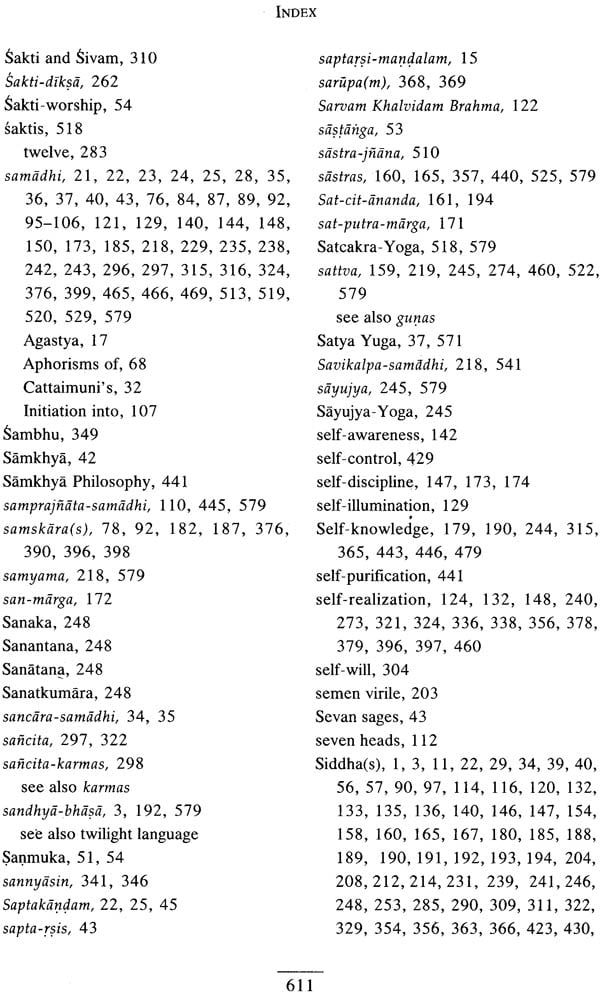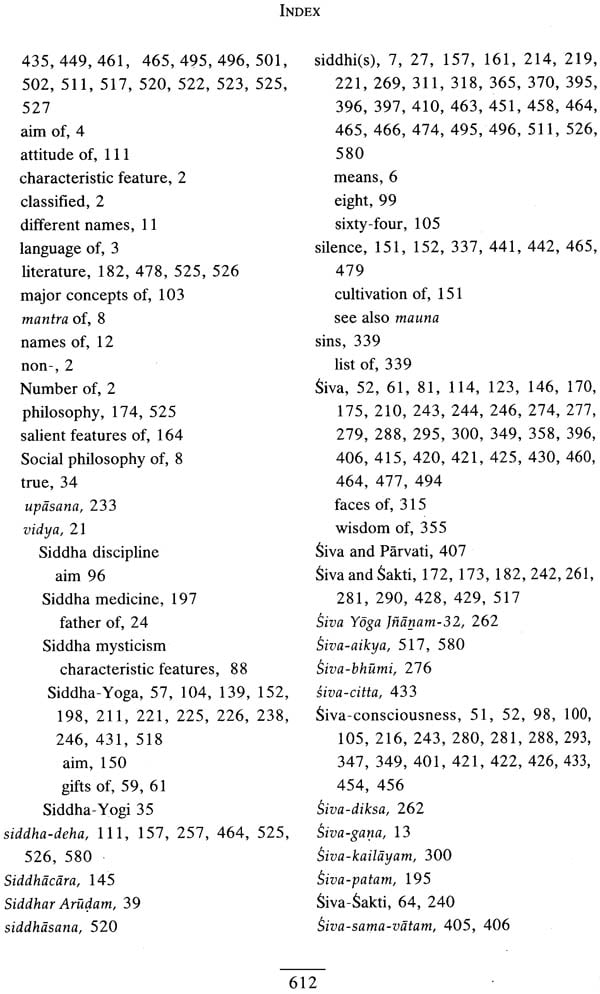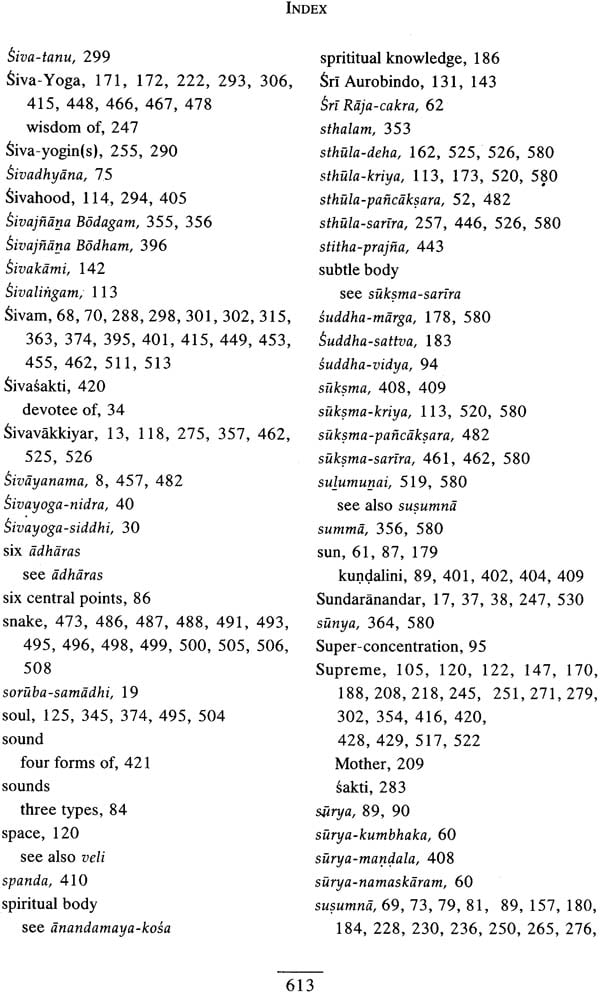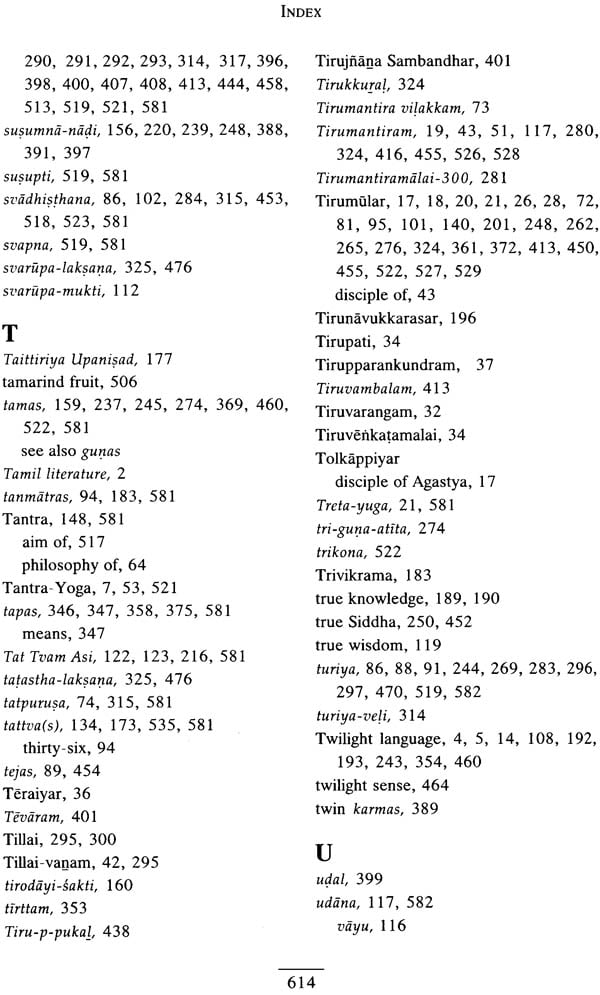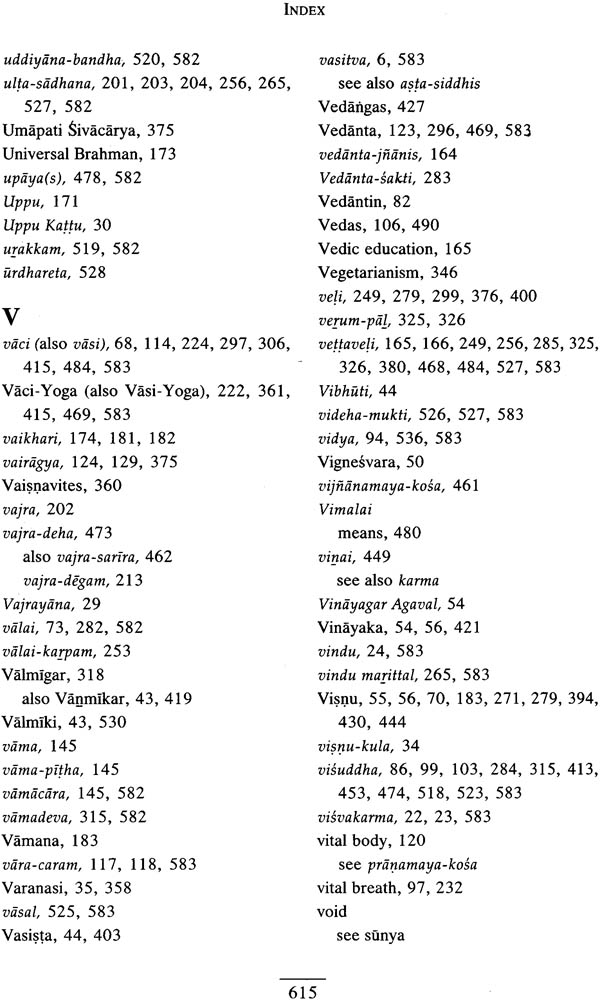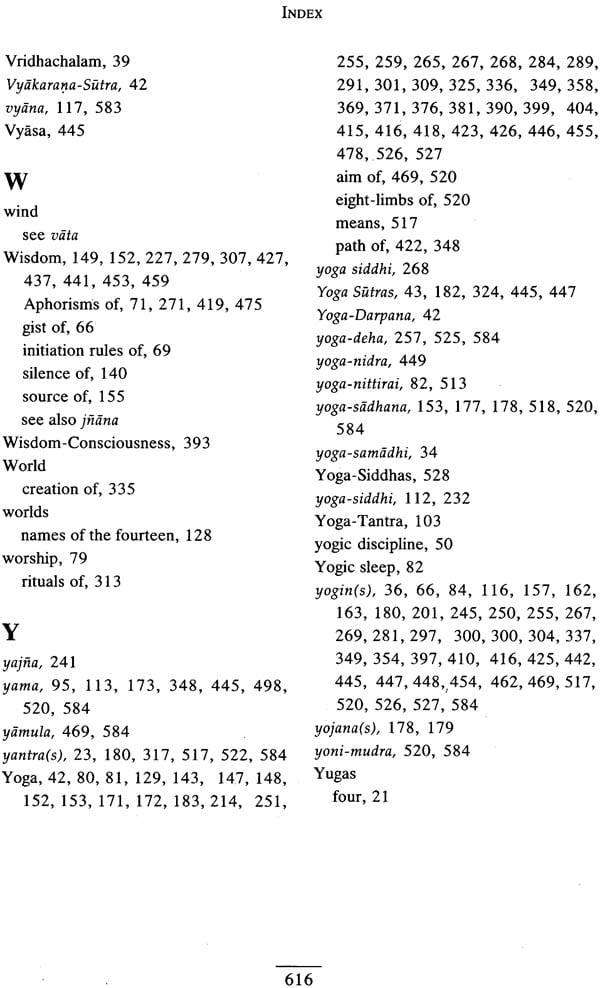
The Yoga of the 18 Siddhas (An Anthology)
Book Specification
| Item Code: | IHL682 |
| Author: | T.N. Ganapathy |
| Publisher: | Babaji’s Kriya Yoga Trust |
| Language: | English |
| Edition: | 2004 |
| ISBN: | 9781895383249 |
| Pages: | 643 (18 Color Illustrations) |
| Cover: | Paperback |
| Other Details | 9.5 Inch X 6.4 Inch |
| Weight | 1.13 kg |
Book Description
The yoga of the Eighteen Siddhas an Anthology should be studied by every serious student of Yoga and Tantra as well as scholars and philosophers. It contains the revolutionary statement of those great men and women who have reached the furthest heights of human potential and who left behind a roadmap for the rest of us. The Eighteen Yoga Siddhas is a tradition referred to in the ancient Tamil language and literature. Its illustrious members traveled all over the world had extremely long lives and performed what most of us would consider being miracles. They did not like to be autobiographical preferring to identify themselves with that deathless jivatma, being consciousness bliss. Consequently thy consciously changed bodies as easily as we change clothes when necessary laughing at the limitations of ordinary humans. They were not only mystics in the truest sense but revolutionaries against human nature and they envisioned and embodied divinity as a result of tremendous efforts of self mastery and self surrender to their God Head.
They left behind their teachings in the form of poems written on palm leaves or edus. These works have been badly neglected by scholars to date because of the difficulty in deciphering them. The Siddhas wrote in what has been referred to as a twilight language to obscure the meaning from all but he most sincere students and prompting the reader to seek the deepest meaning within themselves.
The Siddhas represent the best of what we can all aspire to become. Their illuminating writings so filled with the light of God realization leave a profound impact on the heart and mind of the reader. They also provide a unique source of understanding of both the means and results of Kundalini Yoga a great esoteric art and science.
The yoga of the Eighteen Siddhas an anthology should be studied by every serious student of Yoga and Tantra as well as scholars and philosophers. It contains the revolutionary statements of those great men and women who have reached the farthest heights of human potential and who have left behind a roadmap for the rest of us. The eighteen Yoga Siddhas is a tradition referred to in the ancient Tamil Language literature. It includes more than one hundred individuals according to various lists. While most of them originated in Tamil Speaking Southern Part of India many of them came form northern India including the Himalayas. These included Agastya, Tirumular, Goraknath, Nandidevar and Maccamuni. Their was no narrow sectarian view of the world. All countries are my homeland and all peole are my brethren was their motto. They traveled all over the world had extremely long lives and performed what most of us would consider to be miracles. They did not like to be autobiographical preferring to identify themselves with that deathless Jivatma, being consciousness bliss and they consciously changed bodies as easily as we change clothes when necessary laughing at the limitations of ordinary humans. They were not only mystics in the truest sense but revolutionaries against human nature and they envisioned and embodied Divinity as a result of tremendous efforts of self mastery and self surrender to their God head. Eschewing the narrow confines of religion they sought to break down the privileged power structures of the priests the temples and the castes in so doing they made enemies of the orthodox religionists.
Their works consequently have been badly neglected by those institutions which normally would be charged with their preservation. For hundreds of years many of them were passed down from father to son particularly in those families who were dedicated practitioners of the particular form of medicine, Siddha-Vaidya developed by the members of this eighteen Siddha tradition. They left behind their teachings in the form of poems written on palm leaves or edus. Today thousands of these poems related to Yoga have survived copied by succeeding generations on the palm leaves and are now lying on the dusty shelves of special manuscript libraries in South India as well as in the museums in London and the Vatican. Still more are in the hands of private collectors and Siddha medicine practitioners. Practically no western scholars have attempted to review them. Even most Indian scholars have found that they are too difficult to decipher written as they are in a deliberately obscure manner.
I am deeply grateful to Dr. T.N. Ganapathy and his team of Tamil School ars including Dr. Prema Nandakumar, Dr. P.S. Somasundaram, Dr. T.B. Siddha-lingaiah, Dr. Kr. Arumugam and Dr. S.P. Sabharathnam for their efforts in bringing out this fine work. At the end of the 19th century several anthologies of the Siddha writings were compiled in Tamil but it was not until Yogi S.A.A Ramaiah published the songs of the Eighteen Siddhas in 1967 that the English speaking world outside Tamil Nadu Could Begin to appreciate these spiritual giants. This latter work was written mostly in Tamil but contained several English essays which greatly inspired me when I became Yogi Ramaiah’s student in 1970. Shortly thereafter the Czech Linguist Kamil Zvelebil wrote the poets of the Powers which was published by Rider & Company in 1971. It was the first attempt by a Western Scholar to write about this tradition of Yoga Yogi Ramaiah was one of Kamil Zvelebil most important Siddha Informants.
Since that time I have longed for the day when the writings of all of the eighteen Yoga Siddhas could be published in English and other foreign languages. Thirteen years ago in 1990 I wrote and published Babaji and the 18 Siddha Kriya Yoga Tradition which introduced to the western world the life and teachings of Babaji Nagaraj and his gurus the Siddhas Agastya nad Boganathar and provided many valuable details about the lives of each of the eighteen Siddhas. This same Babaji was first revealed to the western world in Paramahansa Yogananda’s Autobiography of a yogi in 1946. on 1992 I published the first international edition of Tirumandiram written by Tirumular one of the most important works of the eighteen Siddhas. Over the next ten years I wrote the Kriya Yoga Sutras of Patanjaili and the Siddhas which was published in 2001 and suggests that Patanjali was a part of the eighteen Siddha tradition by comparison of Patanjali’s teachings with those found in the Tirumandiram.
In 2000 the Siddha Yoga Research project was founded to preserve evaluate, translate, and publish all the writings of the eighteen Siddhas. To day nearly 1000 leaf manuscripts have been copied onto compact disks. In 2003 the Yoga of Siddha Boganathar was published by Kriya Yoga Publications as the first product of this project.
This project is co-sponsored by the yoga Research and Education center (founded and directed by Georg Feuerstein) and Babaji’s Kriya Yoga order of Acharyas, which are two non-profit charitable organizations dedicated to research and education in the field of Yoga. In May 1995 Georg Feuerstein called me. It was our first contact. He had reprinted Kamil Zvelebil’s the poets of the powers in 1993 but unable to sell them offered me the entire lot of 2000 copies at a price I could not refuse. He had also come across my publication of Tirumandiram and had asked for permission to use some of its drawings in his Encyclopedia of Yoga. Since that time our collaboration has grown. This Project has require much financial resources and much time and effort on the part of many but thanks to the donations of many persons who have been inspired by our earlier works we have been able to support it thus far in spite of out modest means. We trust that this present work will inspire others to support the continuance of this project. Many more manuscripts have yet to be preserved reviewed translated and published.
My wife Durga and Myself have carefully weighed every verse in this anthology and have wirten some of the commentaries in the light of our experience with Kundalini Yoga. Yogi Ramaiah often used to say that the writings of the Siddhas could not be published without the efforts of a multidisciplinary team of yogins, Tamil Scholars, linguist’s philosophers and scientists. Such a team has produced this along with Walter Neelakanatan who supervised its transformation from a manuscript into published form.
The reader may wonder why we have put so much effort into this work. The answer is quite simple. The Siddhas represent the bet of what we can all aspire to become. Their illuminating writings so filled with the light of God realization leave a profound impact on the heart and mind of the reader. They also provide a unique source of understanding of both the means and results of Kundalini Yoga a great esoteric art and science.
| Foreword (M. Govindan Satchitananda) | xi | |
| Before Entering (T.N. Ganapathy) | xv | |
| Acknowledgement | xix | |
| Notes on Translation | xxi | |
| Guide to Pronunciation in Tamil | xxiii | |
| Contributors | xxv | |
| Introduction | ||
| 1 | A Curtain Raiser (T. N. Ganapathy) | 1 |
| 2 | Life Sketches of the Siddhas (T.N. Ganapathy and Kr. Arumugam) Nandidevar 13; Agastya 15; Tirumular 17; Kamalamuni 22; Bogar 22; Karuvurar 30; Cattaimuni 31; Konganar 33; Ramadevar 34; Maccamuni 32; Sundaranandar 37; Pambatticcittar 38; Idaikkattuccittar 39; Kudambaiccitar 41; Patanjali 41; Valmiki 43; Gorakkar 44; Danvantiri 45; | 11 |
| The Translated Poems | ||
| 3 | Nandidevar – Pujavidhi-12 (Prema Nandakumar) | 49 |
| 4 | Agastya – Selections from Agastya’s Poems (S.P. Sabharathram) | 63 |
| 5 | Tirumular – Dhyanam-20 (Prema Nandakumar) | 75 |
| 6 | Tirumular – Samadhi-14 (Prema Nandakumar) | 95 |
| 7 | Bogar – Samadhi Diksai-10 (T. N. Ganapathy) | 107 |
| 8 | Konganar – Meyjnanam-13 (Prema Nandakumar) | 119 |
| 9 | Konganar – Cutta Jnanam-16 (Prema Nandakumar) | 137 |
| 10 | Maccamuni – Karana Jnanam-10 (P.S. Somasundaram) | 155 |
| 11 | Gorakkar – Brahma Jnana Darisanam-17 (Prema Nandakumar) | 169 |
| 12 | Gorakkar – Karpa Custiram-31 (Prema Nandakumar) | 195 |
| 13 | Cattaimuni – Paripuranam-12 (Prema Nandakumar) | 217 |
| 14 | Cattaimuni – Samadhi-12 (Prema Nandakumar) | 235 |
| 15 | Sundarnandar – Selections form Siva Yoga Jnanam-32 (P.S. Somasundaram) | 247 |
| 16 | Sundaranandar – Jnana Cuttiram-14 (P.S. Somasundaram) | 271 |
| 17 | Sundarnandar – Meyjnanaccurukkam-16 (T.N. Ganapathy) | 287 |
| 18 | Ramadevar – Jnanam-5 (P.S. Somasundram) | 307 |
| 19 | Ramadevar – Selections for Pujjavidhi-10 (P.S. Somasundaram) | 313 |
| 20 | Kudambaiccittar – Selection from Kudambaiccittar’s Poems (T.B. Siddhalingaiah) | 321 |
| 21 | Karuvurar – Selections form Karuvurar’s poems (T.B. Siddhalingaiah) | 355 |
| 22 | Idaikkattuccittar – selection from Idaikkattuccitar’s Poems (T.B. Siddhalingaiah) | 363 |
| 23 | Kamalamuni – Jnana Caitanayam-18 (P.S. Somasundaram) | 393 |
